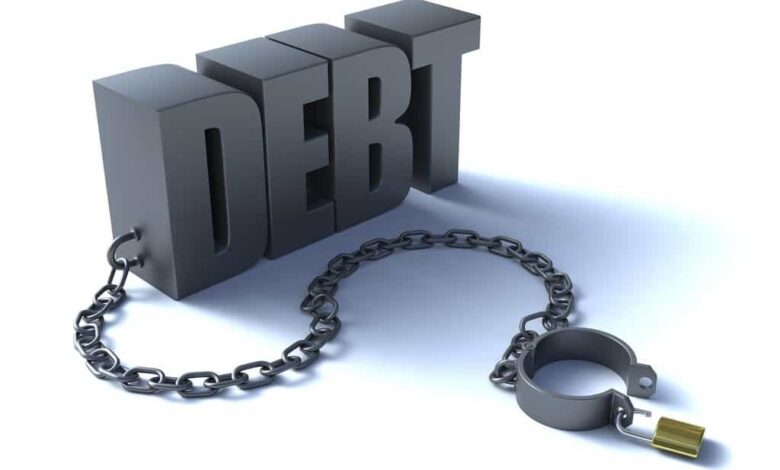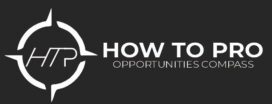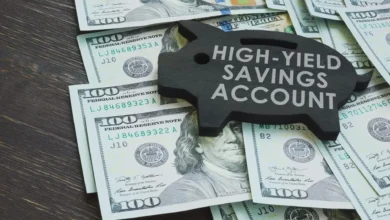
Crush Your Debt in No Time: The Ultimate 5-Step Strategy to Get Out of Debt Fast!
Crush Your Debt in No Time: The Ultimate 5-Step Strategy to Get Out of Debt Fast!
Debt can feel like an anchor, weighing you down and keeping you from achieving your financial goals. If you’re struggling with debt, it’s time to take action and break free. In this guide, we’ll walk you through the 5-step strategy that will help you get out of debt fast. Whether you’re buried under credit card debt, student loans, or personal loans, these strategies will help you reduce your debt quickly and efficiently.
Introduction: Understanding the Burden of Debt
The Growing Problem of Debt – (Crush Your Debt)
In 2025, millions of people are still struggling with debt. Whether it’s due to unexpected expenses, poor financial decisions, or living beyond your means, debt has a way of piling up. The good news is that with the right strategy, you can crush your debt and take control of your financial future.
The Impact of Debt on Your Financial Health – (Crush Your Debt)
Debt doesn’t just drain your bank account—it can also hurt your mental and emotional health. The constant worry about bills and payments can lead to stress and anxiety, making it harder to focus on other important areas of your life. Debt also limits your ability to save and invest for the future, keeping you stuck in a cycle of financial uncertainty.
Why Getting Out of Debt Should Be Your Priority – (Crush Your Debt)
Getting out of debt should be your top financial priority because it opens up so many opportunities. Once your debt is gone, you’ll be able to build savings, invest for the future, and enjoy financial freedom. This guide will help you take the necessary steps to achieve that freedom as quickly as possible.
Step 1: Assess Your Current Debt Situation – (Crush Your Debt)
How to Gather All Your Debt Information
The first step in tackling your debt is understanding exactly how much you owe. List all your debts, including credit cards, student loans, mortgages, and personal loans. Be sure to note the interest rates, monthly payments, and total balance for each debt.
Create a Debt Inventory
Organize your debts by interest rate and balance to give you a clear picture of your financial situation. This will allow you to determine which debts to prioritize when paying them off. If you’re feeling overwhelmed, use a debt payoff calculator to visualize your debt reduction strategy.
Understanding Your Interest Rates and Monthly Payments
High-interest debt, such as credit cards, can quickly spiral out of control if not addressed. Prioritize paying off high-interest debt first, as this will save you money in the long run. If you have multiple debts with similar interest rates, consider the debt snowball method (more on that in step 3).
Tools and Apps for Managing Your Debt Inventory
There are several tools available to help you track and manage your debts:
- Mint: Automatically tracks your debts and payments.
- YNAB (You Need a Budget): Helps you create a budget and track your debt reduction progress.
- Debt Payoff Calculator: Use this tool to determine how long it will take to pay off your debts based on your current payment plan.
Recommended Debt Management Tools
For more detailed debt management, we recommend checking out Mint for tracking your expenses and creating a monthly budget, and YNAB for a more in-depth budgeting solution.
Step 2: Create a Budget and Cut Unnecessary Expenses – (Crush Your Debt)
How to Build a Budget That Works
A solid budget is the foundation of your debt repayment plan. Start by tracking all your income and expenses. Use this information to determine how much money you have left each month to put toward your debt.
The 50/30/20 Rule: A Simple Budgeting Method
The 50/30/20 rule is a simple and effective budgeting method:
- 50% of your income goes toward needs (rent, groceries, utilities).
- 30% goes toward wants (entertainment, dining out).
- 20% goes toward savings and debt repayment.
Cutting Expenses Without Sacrificing Quality of Life
Look for ways to reduce unnecessary expenses without sacrificing your lifestyle completely. Can you reduce dining out or cancel subscriptions you don’t need? Every dollar saved can be put toward your debt.
Tools and Apps to Help Track Your Spending
There are many budgeting tools that can help you track your spending:
- Mint: Automatically categorizes your spending.
- Truebill: Helps you cancel unused subscriptions.
- PocketGuard: Shows you how much disposable income you have left after expenses.
The Importance of Living Below Your Means
Living below your means is crucial to debt reduction. It’s about making conscious decisions to spend less and save more. Cutting back on unnecessary expenses will help you pay off your debt faster and get your finances on track.
Step 3: Choose the Right Debt Payoff Strategy – (Crush Your Debt)
The Snowball Method: Focus on Paying Off the Smallest Debt First
The snowball method is all about momentum. Pay off your smallest debt first, then move to the next smallest. This method can be motivating because you see progress quickly, which encourages you to keep going.
The Avalanche Method: Pay Off High-Interest Debt First
With the avalanche method, you focus on paying off the debt with the highest interest rate first. This method saves you the most money in the long run, as high-interest debt can quickly spiral out of control.
Which Strategy Is Right for You?
The right strategy depends on your personal preferences and goals:
- Choose the snowball method if you need quick wins to stay motivated.
- Choose the avalanche method if you want to minimize the amount of interest you pay over time.
Pros and Cons of Each Method
- Snowball: Motivating, but may cost you more in the long run.
- Avalanche: Saves you money, but can feel slower and less rewarding.
How to Stay Motivated During the Debt Payoff Process
Staying motivated during debt repayment can be challenging. Celebrate small victories, like paying off a credit card or making an extra payment. Remind yourself of your long-term financial goals and stay focused.
Step 4: Increase Your Income to Accelerate Debt Repayment – (Crush Your Debt)
How to Find a Side Hustle
If your current income isn’t enough to pay off your debt quickly, consider finding a side hustle. The extra income can be used specifically for debt repayment.
High-Impact Side Hustles to Boost Your Income
Some of the best side hustles include:
- Freelance writing: Earn money by writing articles, blogs, or content for businesses.
- Online tutoring: Help students with academic subjects or standardized test prep.
- Virtual assistance: Provide administrative support to businesses and entrepreneurs.
How to Negotiate for a Raise at Work
Don’t forget to explore opportunities at your current job. Use your accomplishments to justify a salary increase, and research the average salary for your role in your area.
Tips for a Successful Salary Negotiation
- Do your research on typical salaries for your position.
- Practice your pitch.
- Be confident and articulate the value you bring to the company.
Generating Passive Income to Pay Down Debt
Consider generating passive income through investments, real estate, or starting a blog. Passive income can provide additional money that you can use to pay off your debt faster.
Step 5: Stay Committed and Celebrate Milestones – (Crush Your Debt)
Setting Realistic and Achievable Goals
When setting your debt repayment goals, break them into smaller, manageable milestones. This way, you can track your progress and celebrate each step forward.
The Importance of Tracking Your Progress
Use apps or spreadsheets to track your debt payoff progress. Seeing how much you’ve paid off can be motivating and help you stay on track.
Rewarding Yourself (While Staying on Track)
Don’t forget to reward yourself for hitting milestones, but keep your rewards affordable and within your budget. A small celebration, like a day out or a special treat, can motivate you to keep going.
The Power of Small Wins
Each time you pay off a debt or make an extra payment, celebrate that win. It’ll help keep you motivated to continue on your debt-free journey.
Creating an Emergency Fund to Avoid Future Debt
Once your debt is under control, focus on building an emergency fund. Having 3-6 months of living expenses saved will prevent you from falling back into debt in case of unexpected financial setbacks.
Conclusion: You Can Get Out of Debt – Start Today!
Getting out of debt doesn’t have to take years—it can happen faster than you think if you follow the right steps. By assessing your situation, budgeting wisely, choosing the best debt payoff strategy, increasing your income, and staying motivated, you can crush your debt and achieve financial freedom.
Also Read: Don’t Invest Until You Read This: 7 Hidden Mistakes New Investors Make
The Power of Taking Action
The key to getting out of debt is taking action. Start today, and before you know it, you’ll be debt-free and on your way to financial independence.
Staying Disciplined and Motivated
Remember, consistency is key. Stick to your plan, celebrate small wins, and keep your eye on the prize.
Your Financial Future Starts Now
It’s time to take control of your finances. Follow these steps, and you’ll soon find yourself debt-free and building a stronger financial future.
CTA: Ready to Crush Your Debt?
Take the first step toward financial freedom today! Start with the 5-step strategy outlined in this post and begin your journey to becoming debt-free. Get started now!
FAQs
How long will it take to get out of debt?
The time it takes to get out of debt depends on the amount of debt, your income, and how much extra you can pay toward your debt each month. On average, it can take anywhere from a few months to several years.
What if I can’t afford to make extra payments on my debt?
If you can’t make extra payments, focus on reducing expenses and increasing income through side hustles or negotiating a raise. Even small changes can help speed up the process.
Should I focus on paying off credit cards or student loans first?
Credit cards usually have higher interest rates, so it’s typically better to pay them off first using the avalanche method. However, if paying off a smaller debt first will motivate you, use the snowball method.
Is debt consolidation a good option?
Debt consolidation can simplify your payments and lower your interest rate, but make sure you understand the terms before moving forward. It’s a good option if it lowers your overall interest and payment load.
How do I avoid going back into debt once I’m free?
Create a budget, avoid lifestyle inflation, and build an emergency fund to ensure that you never have to rely on credit cards or loans again.
CTA: Ready to Start Your Debt-Free Journey?
Click here to learn more about effective debt management strategies.









